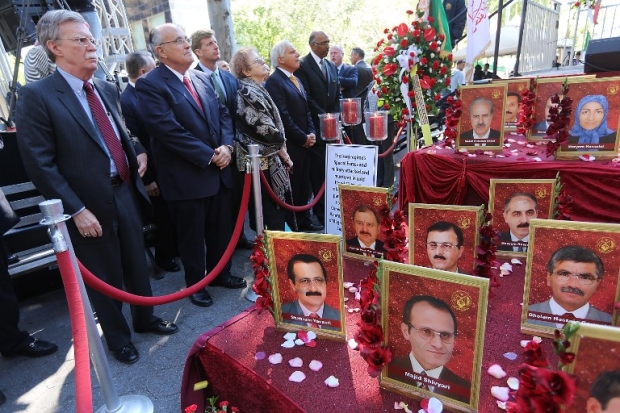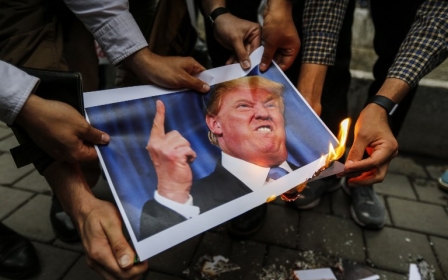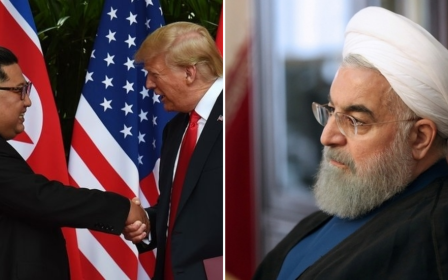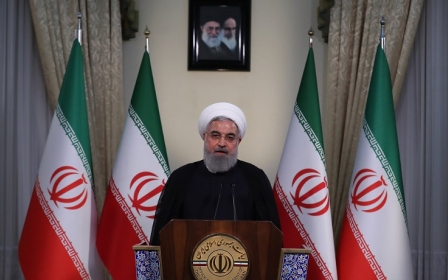Strange alliance of Trump hawks and exile group poses threat to Iran
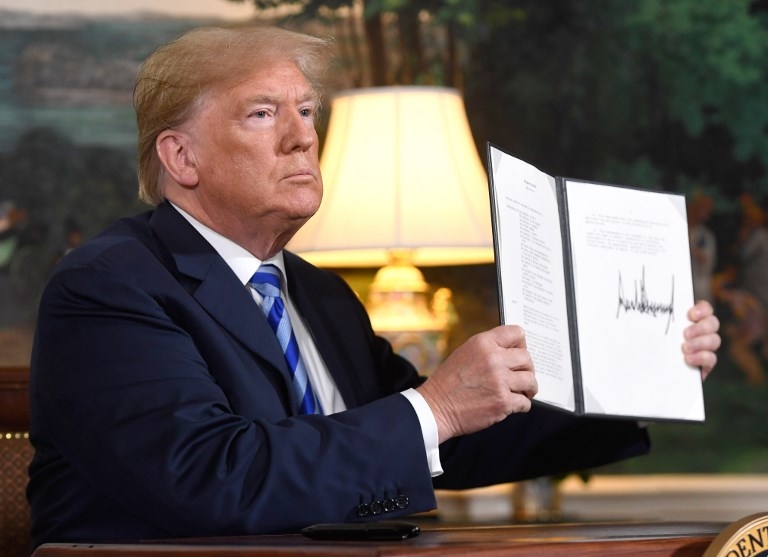
A reported bombing attempt on a Mojahedin-e-Khalq (MEK) rally near Paris earlier this month has once again thrust this odd, cult-like organisation onto the centre stage of Iran's international relations.
Derided by most Iranian activists and analysts as a totalitarian group with little-to-no influence inside the country, the MEK nonetheless has an uncanny ability to dominate the political exile scene, remaining a considerable nuisance for Iranian authorities.
This is principally due to two factors. Foremost the group has an iron-clad organisation, perfected over 50 years, since its formation in 1965. Second, it is remarkably good at lobbying western political and media organisations, as evidenced by the impressive speaker lists at its events.
US hawks
Despite suffering huge setbacks in recent years – notably losing its Iraqi base – the MEK is poised to play a role in the revived Iran regime-change campaign in Washington. The appointment of MEK supporter and notorious Iran hawk John Bolton as US national security adviser has been correctly interpreted in Tehran as an unmistakeable sign of American intent.
Whoever was behind the reported bombing attempt in Paris clearly wanted to raise the stakes. The real aim might have been to send a message, rather than to physically harm rally participants.
The hatred of the MEK is complex and has many causes. At its core, most Iranians regard the group as an anachronism
One reason US hawks and other anti-Iran western politicians have rallied round the MEK is that there is no alternative. For all its faults, the MEK is not only the largest exiled opposition group, but arguably the only one that is truly organised with the exception of ethnic-based groups, such as the Kurds.
The other alternative that has been floated is the son of the late shah, Reza Pahlavi, but he struggles to pass preliminary credibility tests. Not only does he lack a formal organisation, but his brand is forever tainted by association with a fallen monarchy. Moreover, Pahlavi is the object of ridicule whenever he appears on Farsi-language media, as his Farsi is less than perfect, and his grasp of complex political and strategic issues is less than convincing.
The MEK's uncompromising rhetoric on the Islamic Republic aligns with that of US hawks such as Bolton, former New York City mayor Rudy Giuliani and Republican Senator Tom Cotton, who appear to believe that the Iranian government can be toppled through severe economic sanctions and other extreme pressures.
Public disdain
Little heed is paid to the fact that the MEK has virtually no influence inside Iran, and its most outstanding political achievement is its ability to unite normally fractious Iranians in their severe dislike of the cult-like group.
The hatred of the MEK is complex and has many causes. At its core, most Iranians regard the group as an anachronism - a throwback to the 1960s and 1970s, when radical leftist ideologies held sway. Moreover, the group's quixotic mix of Shia Islam and elements of Marxism - and above all its cult-like culture and total grip over its members - make it particularly suspect and distasteful.
In addition, the group's alliance with Saddam Hussein during the long-running Iran-Iraq War places it beyond the pale as far as mainstream Iranian public opinion is concerned.
The plot to bomb the MEK rally in Paris appears to involve three countries: Belgium, France and Germany. An Austria-based Iranian diplomat was arrested in Germany, reportedly for being in contact with the Belgian couple of Iranian descent who were allegedly at the centre of the plot.
While much remains unknown, a historical review of the Iranian security establishment's struggle against the MEK can illuminate the general context surrounding the case.
The role of Iranian intelligence
For nearly three decades, the MEK file was the exclusive domain of the Ministry of Intelligence and Security (MOIS), who were tasked with penetrating and subverting the group. In a long period of trial and error, the MOIS developed deep expertise on the MEK, eliminating its presence inside Iran - save for manipulated MEK cells acting under MOIS direction - and thoroughly penetrated its structures in Iraq and the West. It even went so far as organising dissident and former members, in addition to investing considerable resources in mobilising family units against MEK cadres.
The stranglehold over all aspects of the MEK's existence was so complete that it was difficult to know where the MOIS ended and the MEK began. In many ways, the MOIS was a victim of its own success, as some elements of the Iranian establishment grew wary – if not downright suspicious – of the intelligence ministry's increasingly soft attitude towards the group, in particular its extensive sponsorship of former members and supporters.
The tipping point appears to have centred on internal discussions on how to close down the MEK's central base in Iraq, the Ashraf camp. According to former MEK members, the MOIS probably opposed a military raid on the camp, preferring - for unknown reasons - to keep the group in limbo indefinitely.
The end, however, was as swift as it was brutal. In a September 2013 raid on the camp, 52 MEK members, including several senior figures, were killed, and several others captured. The mastermind of the raid was a shadowy paramilitary intelligence unit linked to the Islamic Revolutionary Guards Corps.
Lobbying governments
The real importance of that fateful raid was not that it led to the MEK’s departure from Iraq, but that it ended the monopoly of the MOIS over the MEK file. Today, several Iranian intelligence agencies track the MEK in Europe and North America, all of which run agents and informants inside the group. The potential for misunderstanding and working at cross-purposes is considerable.
The MEK may be unpopular, but it cannot be accused of being ineffective. The group remains the biggest public relations threat to Iran in the West, as it consistently lobbies governments, parliamentarians, the media and human rights organisations. These activities are a cause of real concern for Iranian diplomacy, hence justifying the intelligence resources directed at tracking and containing the group.
As pressure mounts on Iran, so will the temptation to strike at a relatively easy target like the MEK
Although the MEK has little verifiable presence inside Iran, Iranian authorities fear its organising potential, particularly if the US throws its full weight behind the group. This is unlikely, however, at least for the foreseeable future - as the US policy community remains opposed to working with the MEK, in part because of its murder of Americans in the 1970s.
But the connection of so many hawks and staunchly anti-Iranian elements to the Trump administration is sufficiently alarming to Tehran that pressure may be applied on the security establishment to take kinetic measures to deter US cooperation with the MEK. As pressure mounts on Iran, so will the temptation to strike at a relatively easy target like the MEK.
- Mahan Abedin is an analyst of Iranian politics. He is the director of the research group Dysart Consulting.
The views expressed in this article belong to the author and do not necessarily reflect the editorial policy of Middle East Eye.
Photo: US President Donald Trump signs a document reinstating sanctions against Iran in Washington on 8 May 2018 (AFP)
New MEE newsletter: Jerusalem Dispatch
Sign up to get the latest insights and analysis on Israel-Palestine, alongside Turkey Unpacked and other MEE newsletters
Middle East Eye delivers independent and unrivalled coverage and analysis of the Middle East, North Africa and beyond. To learn more about republishing this content and the associated fees, please fill out this form. More about MEE can be found here.



